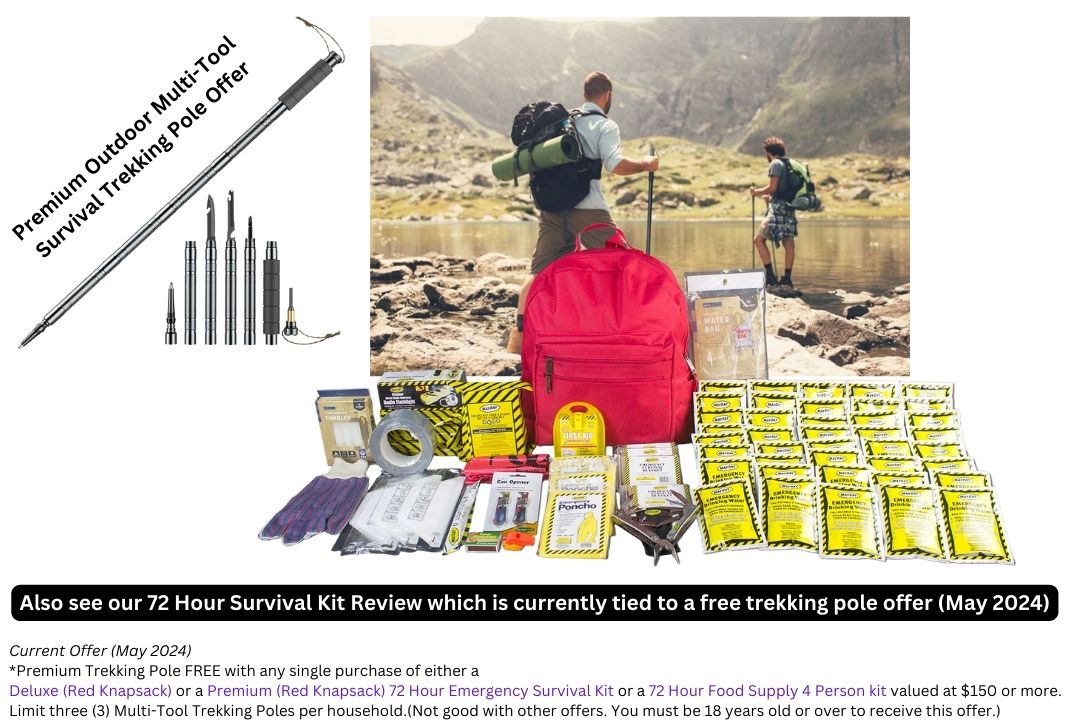How to Use Trekking Poles | Don’t Let Them Make the Uphills Harder
If you’re new to hiking or have never used trekking poles before, you may be wondering how they can benefit you. Trekking poles can help with propulsion, rhythm, shock absorption, and balance, making them a valuable tool for any hiker or mountaineer. In this article, we’ll go over some tips and techniques for how to use trekking poles effectively.
Before anything else, it’s important to use the strap correctly. Instead of holding the pole all the time, place the strap in the palm of your hand to easily control the poles without gripping them. Additionally, when using trekking poles for uphill propulsion, make sure to push away with your fists and create an angle in the pole for maximum efficiency. Adjusting the pole height as the hill gets steeper can also help you conserve energy. Finally, knowing when to fold up your poles and rely on your hands for support is crucial for safety and efficiency. Let’s look a bit deeper into all this now.
Key Takeaways  |
|---|
Trekking poles are a valuable tool for any hiker or mountaineer, providing benefits such as rhythm, shock absorption, and balance. |
Using the strap correctly and pushing away with your fists can maximize the benefits of trekking poles for uphill propulsion. |
Adjusting the pole height and knowing when to fold up your poles can help you conserve energy and stay safe. |
Purpose of Trekking Poles
Trekking poles are an essential tool for any hiker or mountaineer. They can help you in a variety of ways, including adding propulsion to help move you forward, maintaining a rhythm or cadence, absorbing shock, and improving balance.
When using trekking poles, it is important to keep a few things in mind. Firstly, make sure to use the strap correctly. By keeping the strap in the palm of your hand, you can easily control the poles without having to grip them all the time. This technique also helps absorb shock, especially when going downhill.
Another crucial technique is the placement of the pole for propulsion. Placing the pole directly on the ground won’t give you any forward propulsion, so it’s essential to reach forward and push away with your fists. This creates an angle in the pole, which provides propulsion. Make sure to place the pole around where your foot is, and lead with your thumb for maximum effect.
Additionally, pole height is crucial when going uphill. By shortening the poles slightly, you can maintain a good grip on the ground and avoid putting unnecessary strain on your cardiovascular system.
When hiking with trekking poles, it is also important to engage your upper body and push through the poles to give you some propulsion. Many hikers make the mistake of using their poles too passively, but by engaging your core, chest, and shoulders, you can get the most out of your trekking poles.
Importance of Trekking Pole Technique
As a seasoned hiker, you know that trekking poles can be a valuable tool to help you on your journey. Trekking poles can provide propulsion, rhythm, absorption, and balance. However, it’s not just about having the poles, it’s also about using them correctly.
Proper technique is essential to get the most out of your trekking poles. One important aspect is the use of the strap. Make sure to keep the strap in the palm of your hand, which allows you to control the poles easily without having to grip them all the time. This technique also helps absorb shock, especially when going downhill.
Another crucial technique is the placement of the pole for propulsion. Placing the pole directly on the ground won’t give you any forward propulsion, so it’s essential to reach forward and push away with your fists. This creates an angle in the pole, which provides propulsion. Make sure to place the pole around where your foot is, and lead with your thumb for maximum effect.
Additionally, pole height is crucial when going uphill. By shortening the poles slightly, you can maintain a good grip on the ground and avoid putting unnecessary strain on your cardiovascular system.
When hiking with trekking poles, it is also important to engage your upper body and push through the poles to give you some propulsion. Many hikers make the mistake of using their poles too passively, but by engaging your core, chest, and shoulders, you can get the most out of your trekking poles.
How to Use Trekking Pole Straps
When it comes to trekking poles, the straps are an essential component that can make a significant difference in your hiking experience. In this section, we will go over some tips on how to use trekking pole straps effectively.
Firstly, it’s important to note that the strap should be completely in the palm of your hand. This enables you to control the poles easily without having to grip the pole all the time. By holding the strap in this way, you can maintain control of the pole and use it to its full potential.
Secondly, it’s important to use the poles to their full potential by adding propulsion to your hiking. Placing the pole directly on the ground won’t give you any forward propulsion. To add propulsion, you should be pushing away with your fists, creating an angle in the pole. This will give you the momentum you need to move forward.
Another critical aspect of using trekking poles effectively is adjusting the pole height. As you hike uphill, the ground becomes steeper, and the distance to the ground becomes shorter. Therefore, it’s essential to make tiny adjustments to the pole height as the hill gets steeper. This will ensure that your hands are below your heart, making it easier for your heart to pump blood against gravity up into your arms and hands.
Lastly, it’s crucial to know when to hold them and when to fold them. If you are hiking on steep terrain for an extended period, you may want to put away your poles and use your hands instead. This will provide you with three solid points of contact and make it easier to climb the rock.
Propulsion Techniques
As an experienced hiker, you know that trekking poles can be a valuable tool to help you move forward. They can help you establish a rhythm, absorb shock, and improve your balance. But did you know that there are different techniques you can use to maximize the propulsion benefits of your trekking poles?
Firstly, it’s important to use the straps correctly. By keeping the strap in the palm of your hand, you can easily control the poles without having to grip them all the time. This allows you to maintain a rhythm and cadence while hiking.
To add propulsion, it’s important to place the pole around where your foot is and push away with your fists, creating an angle in the pole. This technique can save you a lot of energy over a long day of hiking.
Engaging your core, chest, shoulders, and lats while using trekking poles can also provide added propulsion. Don’t be too passive with your poles – push through them to gain momentum.
Of course, it’s important to know when to hold them and when to fold them. In steep sections or when climbing rocks, it may be best to put away your poles and use your hands instead. And in winter hiking, an ice axe can serve as a middle ground between poles and hands.
Pole Height Adjustment
When hiking uphill, it’s important to adjust your trekking pole height accordingly. As the ground incline gets steeper, the distance between your hand and the ground becomes shorter. Therefore, you need to make tiny adjustments to the pole height, typically 2 inches or less, to maintain the right length. This will ensure that you’re using your poles effectively to provide propulsion and support, and you’re not putting unnecessary strain on your body.
It’s also important to set your poles at the right height to avoid cardiovascular and biomechanical disadvantages. If your poles are set too high, your heart will have to work harder to pump blood up into your arms and hands. Therefore, it’s recommended to set your poles so that your hands are below your heart. This will help you to conserve energy and maintain a comfortable pace.
When using trekking poles, it’s crucial to use them actively and engage your upper body to push through into the pole to give you some propulsion. This technique will help you to move forward with rhythm and cadence, absorb shock, and maintain balance. By pushing your fists forward and creating an angle in the pole, you’ll be able to generate forward propulsion and save energy over a long day.
Advanced Trekking Pole Techniques
If you are an experienced hiker or mountaineer, you probably already know the benefits of using trekking poles. They can help you with balance, shock absorption, and propulsion. However, there are some advanced techniques that you may not be aware of that can make your trekking experience even more efficient and enjoyable.
Firstly, it’s important to use the strap correctly. Instead of holding the pole with your hand, try to keep the strap in the palm of your hand. This will allow you to control the poles easily without having to grip them all the time. Additionally, placing the poles directly on the ground will not give you any forward propulsion. Therefore, it’s recommended to place the pole around where your foot is and push away with your fists to create an angle in the pole for propulsion.
Getting the strap adjustment right works in tandem with the height of the poles we discussed above. When going uphill, the ground is higher relative to the point of your grip. Remember those crucial, tiny adjustments, 2 inches or less, as the hill gets steeper. This will ensure that your hands are always below your heart, which is more efficient for your cardiovascular and biomechanical system.
There are also different techniques that you can use, such as the ski push or the standard version. Engaging your core, chest, shoulders, and lats can provide you with more propulsion and make your trekking experience less passive. It’s important to know when to use your poles and when to fold them. For example, if you are going up a steep section, it may be more efficient to use your hands or an ice axe instead of your poles.

Engaging Upper Body for Efficiency
When it comes to hiking and mountaineering, trekking poles are an essential tool that can help you move forward with ease. In this section, we’ll go over some tips to help you engage your upper body for maximum efficiency.
Firstly, make sure to use the strap of your trekking pole correctly. Instead of holding the pole with a tight grip, let the strap rest in the palm of your hand. This will allow you to control the pole easily without having to grip it all the time. It’s also important to keep in mind that placing the poles directly on the ground won’t give you any forward propulsion. Instead, place the pole around where your foot is and push away with your fists to create an angle in the pole. This technique will provide you with the propulsion you need and save you a lot of energy over a long day.
Another important factor to consider is the height of your poles. When going uphill, there’s a shorter distance to the ground, so it’s best to make tiny adjustments to your pole height as the hill gets steeper. This will ensure that your hands are below your heart, which will make it easier for your heart to pump blood against gravity up into your arms and hands.
Engaging your upper body is also crucial for efficient trekking pole use. Don’t be too passive when using them. Instead, engage your core, chest, shoulders, and lats, and push through the pole to give you some propulsion. This will help you move forward with ease and save you a lot of energy.
Lastly, remember to know when to fold up your poles. If you’re facing a steep section and you know you won’t be able to sustain that level of terrain for more than a few meters, it’s best to put the poles away and use your hands instead. This will give you three solid points of contact and make you feel much safer.
Situational Pole Use
As a hiker, trekking poles can be a valuable tool to help you move forward, maintain balance, and absorb shock when going downhill. By using trekking poles, you can add propulsion to your movements, get into a rhythm, and maintain a cadence. However, it’s important to know how to use them effectively in different situations.
Firstly, make sure to use the strap correctly. Place the strap completely in the palm of your hand, which allows you to control the poles easily without having to grip them all the time. This technique is especially useful when going downhill, as you can use the strap to take some of the shock and maintain balance.
When going uphill, avoid reaching forward too much and pulling your way up the slope. Instead, push the poles back behind you to create propulsion. Place the pole around where your foot is, and push away with your fists to create an angle in the pole. This technique will give you a little bit of propulsion and save energy over a long day.
Another important factor to consider is the height of your poles. When going uphill, adjust your pole height by making small adjustments of 5 centimeters or less as the hill gets steeper. This will ensure that your hands are below your heart, making it easier for your cardiovascular system to pump blood against gravity.
When going downhill, it’s important to know when to hold them and when to fold them. If you encounter steep terrain for more than a few meters, it’s best to put the poles away and use your hands to maintain balance. In this situation, an ice axe can serve as a middle ground between using poles and using your hands.
Comparison of Different Trekking Poles
Trekking poles can be a great asset to hikers and mountaineers, providing benefits such as propulsion, rhythm, shock absorption, and balance. However, not all trekking poles are created equal. In this section, we will compare different types of trekking poles to help you choose the best one for your needs.
Adjustable vs. Fixed-Length Trekking Poles
One of the main differences between trekking poles is whether they are adjustable or fixed-length. Adjustable trekking poles allow you to customize the length to suit your height and the terrain you are hiking on. This can be particularly useful when going uphill or downhill, as you can adjust the length to match the slope. Fixed-length trekking poles, on the other hand, are set at a specific length and cannot be adjusted. While they may be less versatile, they are often lighter and more durable than adjustable poles.
Carbon Fiber vs. Aluminum Trekking Poles
Another factor to consider when choosing trekking poles is the material they are made of. Carbon fiber trekking poles are lightweight and strong, making them a popular choice among hikers and mountaineers. They are also less likely to corrode than aluminum poles, which can be a benefit if you will be using them in wet or humid conditions. However, carbon fiber poles can be more expensive than aluminum poles.
Aluminum trekking poles are more affordable than carbon fiber poles and are also durable and strong. They are a good choice if you are on a budget or if you will be using your poles in harsh conditions where they may get scratched or dented.
Other Factors to Consider
In addition to the material and adjustability of trekking poles, there are other factors to consider when choosing the right poles for you. These include the grip, strap, and tip of the pole. A comfortable grip and strap can make a big difference in how easy it is to use your poles, while a durable tip can help prevent slipping on rocky or icy terrain.
Concluding Advice
Just as any experienced hill walker worth their salt, I would highly recommend that you take the time to learn how to use trekking poles effectively. Trekking poles can provide you with added propulsion, absorption, and balance, all of which are essential for a successful hike.
To ensure that you are using your trekking poles correctly, keep in mind the following tips:
- Use the strap correctly by placing it in the palm of your hand, which allows you to control the poles without having to grip them all the time.
- Place the pole around where your foot is and push away with your fists to create an angle in the pole for added propulsion.
- Adjust your pole height as you go uphill to ensure that your hands are below your heart and prevent cardiovascular and biomechanical disadvantages.
- Engage your core, chest, shoulders, and lats to push through the pole and give you some propulsion.
- Know when to hold them and when to fold them. If you encounter steep terrain or need to use your hands to grab rocks, consider putting away your poles to ensure your safety.


